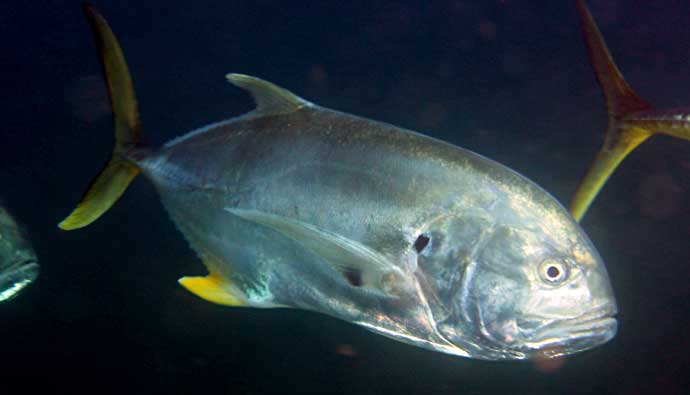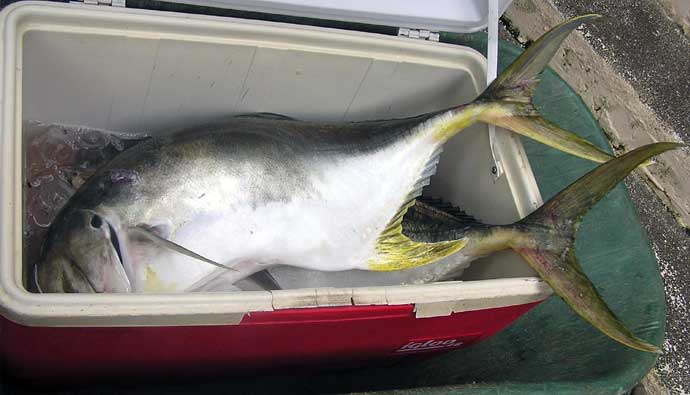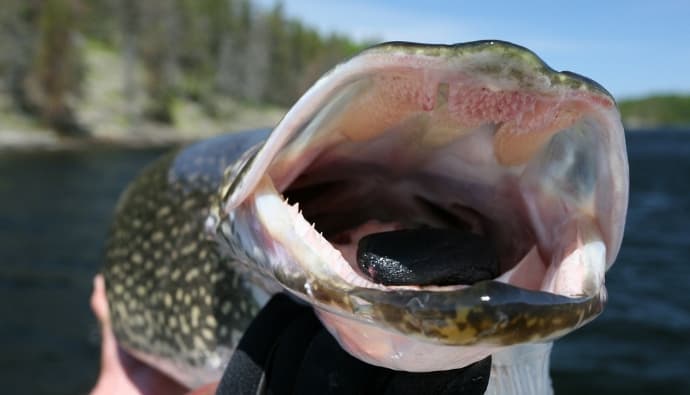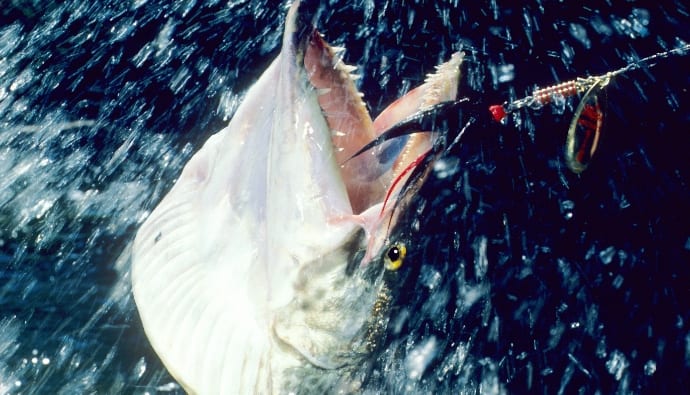If you are looking for a unique-looking fish that is prized by anglers, you need to fish for the jack crevalle fish.

It is also known as jackfish, toro, crevalle, and trevally, and a Pacific version of this fish also exists. Both species look almost exactly alike, and both are tough to catch.
Overview
Both jackfish species are bluish-green or greenish-gold in color on the back with a yellowish or white underbelly. The body is deep and compressed with a rounded profile, and it has a largemouth. The only thing that distinguishes a Pacific crevalle jack from a crevalle jack is the number of scutes – the former has 42, while the latter has 35 at most.
Jack Crevalle Facts
| Scientific Name | Caranx hippos |
| Common Name(s) | Jack Crevalle, Jack Crevalle fish, Jack Cravelle (spelled wrong) |
| Family | Carangidae |
| Identifying Characteristics | The body is deep and compressed with a rounded profile and it has a large mouth. The only thing that distinguishes a Pacific Crevalle Jack from a Crevalle Jack is the number of scutes – the former has 42 while the latter has 35 at most. |
| Depth Range | 1 to 350m |
| Jack Crevalle Size Limits | Check your local regulations. |
The jackfish young swim in large to moderate schools of fish that can also contain horse-eye jacks. It can withstand highly saline waters and can often be found around coastal areas of brackish water. Smaller ones can also be found around muddy bottoms that are about 130 feet deep underwater.
Jack Crevalle Habitat
Jackfish can be found along shore reefs, harbors, and protected bays. Smaller ones can be found over muddy bottoms in very shallow water, such as rivers and estuaries. Adults swim deeper at around 130 feet underwater but move to cooler and deeper water in summer.
Look for the fish when it is feeding. Crevalle jacks will often corner baitfish on the surface and start a feeding frenzy that can be seen from a distance.
How to Catch Jack Crevalle
Like most jacks, the crevalle variety is notorious for putting up ferocious fights. This makes them excellent for light tackle fishing. Most are caught by anglers who are trolling and casting for other fish with both artificial and natural bait. You can also use spinning, fly-fishing, or surfcasting to catch this fish with live bait such as pinfish or mullet.

If you use jack crevalle lures, make sure that you retrieve them without pause. Jacks can lose interest in anything that doesn’t act. Increase your chances of catching one by fishing for this fish at first light. As the day breaks, jacks rush into the shallows to trap small baitfish between them and the land.
That is the best time to use artificial lures that look like small fish. Use a heavy silver spoon or soft plastic that looks like herring or sardine to make them bite.
Jack Fish Tactics
- Target big jacks in the surf zone, especially when baitfish such as mullet are migrating through the coast. This is best done during fall and spring.
- Use a diving plug or a heavy spoon to cast far across the breakers.
- The higher the gear ratio of a reel, the faster you can retrieve it. Since jacks prefer fast-moving targets, this reel will come in handy to entice them.

Jack Fishing Tips
- Use a solid medium tackle setup that can withstand a 12 to 14-pound test to target small and big jacks.
- Bleed and ice the fish immediately if you wish to eat it. The ice will firm up the meat and make filleting easier. Bleed it by cutting off the head and hanging the fish vertically to allow the blood to drain.
- Watch for birds to locate this fish. Jacks drive baitfish to the surface to feed on them, which attracts other predators.
Spearfishing Jack Crevalle
If you’ve caught a bunch of jacks using the rod and reel, then it’s time to feed them some steel. Grab your speargun of choice and take a shot!

Jack Crevalle Fish Seasons
Jacks use coastal estuaries to spawn and grow up in and can be caught inshore all year round. Most are 10 to 12 inches long during this time, which makes for great sport, especially if you want to bend the rods. You can find bigger ones inshore during the fall when the mullet are migrating in large numbers.
How to Clean Jack Crevalle
- Place the small jack on a cleaning board on one side.
- Start cutting from the base of the head and turn the knife downwards towards the spin, and cut all the way to the tail.
- Make an incision from the cut that is near the tail down to the anal fin.
- Place the tip of the knife on top of the spine at the back of the head and slide on top of it across the backbone till you meet the first incision you made.
- Remove the fillet by making many passes across the inside along the spine.
- Flip the fish and repeat on the other side.
How to Cook Jacks Fish
Jack Crevalle Recipes

I’m often asked, “Are Jack Crevalle edible?” Yes, they are!
If you’re ready for a jack crevalle eating guide, here you go!
- Take a bowl and place the jack fillets in it.
- Add lime juice from 1 lime, 1 tablespoon of Cajun seasoning, garlic powder, and salt to taste.
- Let the fish marinate for 10 minutes,
- Heat some oil in a pan over medium heat, then add the marinated fish and its juices.
- Cook for 5 minutes on each side.
- Serve with beans or rice.
FAQs
Jack crevalle can grow up to 1 to 2 feet in length and can weigh over 10 pounds.
Jack crevalle fish have strong teeth and powerful jaws. If they cannot crush a plug and escape, they will break the line.
The jack crevalle can be found in estuaries or rivers in very shallow water. Large jacks can be found 130 feet below the surface around coral reefs or over sandy bottoms hunting for crustaceans.
Use smaller-size bait if you are fishing for jacks inshore, and use larger ones if you are looking for them offshore.
This fish can be toxic to humans due to ciguatera poisoning.
Insider Advice
Jacks may be difficult (not to mention exhausting) to catch but that is what makes it a great sportfish.
If you have fishing tips and strategies that worked for you, share them in the comments below and share this guide if you liked it.




 Facebook
Facebook YouTube
YouTube









